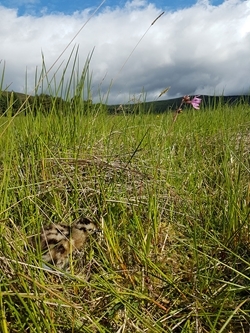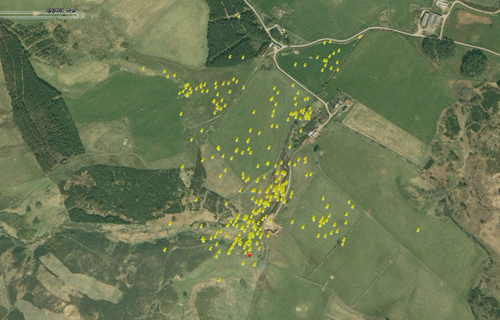 The curlew is a magnificent bird. Few species herald the arrival of spring on Scotland’s marginal upland and hill-edge farmland in quite the same way, with its unique bubbling call announcing their presence. No wonder they have a day dedicated to them each year. But curlew are in dire straits. They have declined across Scotland by 61% (1995 to 2016), twice the rate in England. This is worrying as Scotland holds around 60% of the UK population or approximately a whopping 15% of the world population of this globally declining species. Something needs to be done to help them.
The curlew is a magnificent bird. Few species herald the arrival of spring on Scotland’s marginal upland and hill-edge farmland in quite the same way, with its unique bubbling call announcing their presence. No wonder they have a day dedicated to them each year. But curlew are in dire straits. They have declined across Scotland by 61% (1995 to 2016), twice the rate in England. This is worrying as Scotland holds around 60% of the UK population or approximately a whopping 15% of the world population of this globally declining species. Something needs to be done to help them.
The main driver of decline is loss of quality habitat, related to agricultural intensification, but there is also evidence for increasing predation of nests and chicks. These factors probably interact with higher predation rates in sub-optimal habitats. Urgent action is required to understand how to improve curlew habitats and breeding success and then to apply remedial measures across large areas of the countryside.
Dr Dave Parish, head of GWCT’s Scottish Lowland Research, said: “There are still significant gaps in our knowledge about the needs of curlew. It is crucial we find out how to manage important habitats in Scotland over large areas, and how we might improve productivity to the point where sufficient chicks survive to maintain populations.”
The GWCT is hoping to tackle these issues from its demonstration farm on Deeside, Auchnerran, where there is still a reasonable population of breeding curlew. Dr Parish again: “We are hoping to study the productivity and movements of curlew at Auchnerran and on other farms in the area, principally by tagging adult birds so we can follow exactly where they go in considerable detail. This work began in 2018 on a small scale and is already yielding some fascinating results, but we now need to scale it up to follow more birds from different sites. Unfortunately, COVID-19 has forced us to pause this work as fundraising has become almost impossible.”

Locations of a tagged male in 2019. The red pin shows the nest location,
yellow pins document all of his movements during the nesting period.
Early results from Auchnerran have highlighted the short distances our two tagged birds to date have travelled when away from the nest. This is encouraging, as it suggests they don’t have to go far to find suitable foraging habitat; this is advantageous because it wastes less time and means they are close enough to the nest to help deter roaming predators when the need arises. If funding is available, future research will investigate how far curlew are prepared to travel if the required habitats are not nearby and how this affects breeding productivity. This would be invaluable in helping land managers distribute key habitats across the landscape.
If you would like more information on this project, or of other work taking place at Auchnerran, please get in touch.